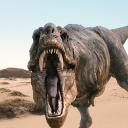Yahoo Answers is shutting down on 4 May 2021 (Eastern Time) and the Yahoo Answers website is now in read-only mode. There will be no changes to other Yahoo properties or services, or your Yahoo account. You can find more information about the Yahoo Answers shutdown and how to download your data on this help page.
Are images alot better with long telescopes/scopes than short scopes or does it all come down to how wide the end lense is ?
6 Answers
- InfinityLv 54 weeks ago
For refraction telescopes, longer is better, up to a certain length. The Yerkes observatory is about as good as a refractory telescope can get. Reflection telescopes are mostly a matter of width. The Hubble space telescope is 4.2 m in diameter, which is why it's able to see such distant objects. Small refraction telescopes are cheap, but you get what you pay for.
- daniel gLv 74 weeks ago
Many things to consider as they all work together as a system.
A longer F/D ratio provides for better resolving power (resolution)
But that means little without a larger aperture. (diameter of the primary lens/mirror.) Depth of field plays a roll, you want your image as flat as possible. Field width, wider is better. Coma and spherical aberration, less is better. this all works against each other so that fine balance makes for a good telescope or lens in photography.
That is a big subject in itself talking astrophotography.
- Ronald 7Lv 74 weeks ago
Whatever collects more Light makes the difference
That is why Hubble has produced such fantastic Images
Such as the Hubble Deep Field
Galaxy 1995 ff was detected through the Gravitational Lensing
11.3 Billion Light Years Distant
Putting it in the Slower Acceleration and Red Shift of 1.4 of the Universe's Expansion
The Area of most Magnification has been caused by something of obvious Mass
Maybe Dark Matter !!
 Source(s): What else could it be and now we have a Measurement ?
Source(s): What else could it be and now we have a Measurement ? - JimLv 74 weeks ago
Many things control the clarity of a telescope's images: aperture size, quality of construction, quality of optics, clocking mechanism accuracy, the observer's site, etc. That's why the Hubble telescope in space is sooooo good!
If quality and location etc. are the same, a bigger diameter telescope will win.
- NyxLv 74 weeks ago
The diameter of the telescope rules nearly everything. A larger aperture collects more light, which can result in finer detail, and more items being seen. Much more useful for looking a Deep Sky Objects (DSOs).
A longer telescope (known as focal length) can produce a better image contrast (the ratio between light and dark), which is more useful for looking at solar system objects (the planets and Moon).
- Anonymous4 weeks ago
If you mean the difference between long thin ones and short fat ones they are two totally different types of telescopes. The long thin ones use nothing but lenses, refracting. The short fat ones use a mirror and are called reflectors. The difference in image quality will come down to the quality of the parts that make up the telescope, you will probably spend a lot more for a good refracting telescope. Both however have different advantages and disadvantages.




